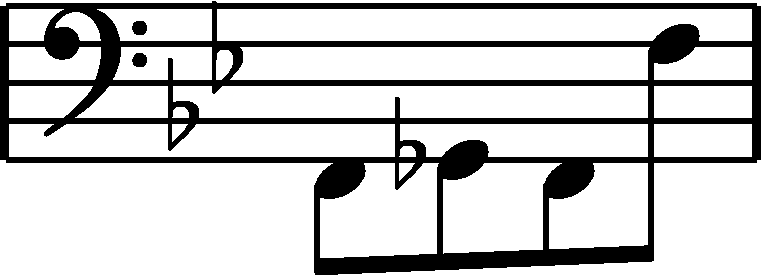



Rhythm
|
b. 159
|
composition: Op. 2, Variations, complete
..
The version of AsI, closer to the rhythm of the previous bars, must be earlier. In the main text we adhere to the improved version of the remaining sources. In the main text we correct the mistake (probably by Chopin) in the notation of the arpeggio, since it is unlikely that a wavy line in this position could have a different meaning. category imprint: Differences between sources; Corrections & alterations; Source & stylistic information issues: Accompaniment changes |
|||||||||||||||||
|
b. 168-170
|
composition: Op. 2, Variations, complete
..
As in b. 128-131, the fact that the bass line was not doubled an octave lower in AsI may be just a simplified version of notation. In A the doubled line was marked with con 8va, which was elaborated in the editions. category imprint: Differences between sources; Corrections & alterations issues: Bass register changes , Abbreviated octaves' notation |
|||||||||||||||||
|
b. 174
|
composition: Op. 2, Variations, complete
..
In the main text we stand by the undoubtedly later version of A (→GE→FE,EE,FESB). Rhythmically speaking, it is also closer to the orchestral version, in which we can hear 4 quavers in the cellos and basses: category imprint: Differences between sources; Corrections & alterations issues: Accompaniment changes |
|||||||||||||||||
|
b. 182
|
composition: Op. 2, Variations, complete
..
In the main text we give a version with e category imprint: Interpretations within context; Differences between sources; Editorial revisions; Corrections & alterations; Source & stylistic information issues: Errors in GE , GE revisions , Accompaniment changes , Authentic corrections of FE |
|||||||||||||||||
|
b. 182
|
composition: Op. 2, Variations, complete
..
In AsI there are two semiquavers at the end of the bar in the first record (b. 182), whereas the second one (b. 182') includes a dotted rhythm, compliant with the versions of the remaining sources. The respective variants are included in the note below. category imprint: Differences between sources; Corrections & alterations issues: Main-line changes , Dotted or even rhythm |

 .
. 1 in
1 in 